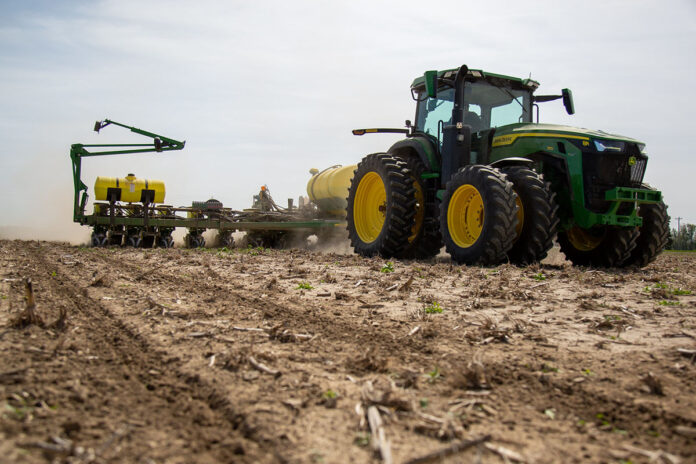It should be no surprise that the planters are still parked in the Midwest. It is still early April, but we have seen articles in farm publications talking about farmers being ready to go, even in the Northern Plains.
Rain, cold and snow flurries in even the best areas of the Corn Belt mean that we have now planted 3% of the nation’s corn crop, according to the USDA National Agricultural Statistics Service’s Crop Progress Report.
That is the average for this date, and that is just where we are. Only seven states have any planting, according to the report. It is no surprise that most of the acres are in Texas. The farmers there have planted 59% of the intended acres, up just 2% for the week, but off 1% from last year.
Predictable
Prices have reacted to the general lack of news in a predictable fashion. The soybeans continue to drift lower, but the corn has gained a little for no particular reason I can determine. It can’t be delayed planting because we are right on time (first part of April, remember). It could be because exports are fairly good. We actually exported more than predicted by the experts for the week that ended April 4, the last report we have.
In that reported week, we exported 55.9 million bushels, which was above the highest trade guess. The range of estimates was from 39.4 million bushels to 55.1. This means that we are staying slightly ahead of the U.S. Department of Agriculture projection for the marketing year so far. That is the only positive corn factor I can find.
The soybean prices continue to slip, even though the Argentines continue to cut crop estimates. USDA is showing a higher estimate than the Buenos Aires Grain Exchange. It is hard to tell which estimate we are “trading,” but I suspect the traders are willing to believe the folks at BAGE. The Brazilian soybean harvest is at 78%, down from the 82% of last year. They have quantity problems from too much rain and quality problems from wet harvest and insect infestation.
The U.S. weather is a mixed forecast. The Mid-South will get heavy rain in the next few days. The Midwest, which is very dry, shows significant rain in the 8-to-14 day forecast. Most of the Corn Belt will be warm the next two weeks, except for the Northern Plains and the upper Midwest. The fact is that none of this matters until the market decides that planting is getting late. With the big equipment at work these days, I don’t think we can scare up a delayed planting rally for another two or three weeks unless there is nothing to trade except that delay.
The reality is that the average planting date is late enough that the corn crop is not hurt if there is no corn planted in April. The real damage comes if that means the beans don’t get planted early enough to meet modern expectations. In some areas, soybeans are planted before corn on some farms, and big farms often run both bean and corn planters at the same time. The early planting yield advantage has been well-documented in the last few years.
Prices in review
Let’s review the price changes. May corn futures made a high back on Oct. 20 at $5.28 3/4. The recent low was made Feb. 23 at $4.11 3/4. We bounced from that to be higher three of the last five sessions. Corn started out higher April 8 and was up three cents in the middle of the day but just closed up one and a quarter. We had lost another three-quarters of a cent so far (10 p.m. April 8) on the overnight session. I remember when we wondered if we could get back to $15, but now we are just hoping to stay in the $14’s.
The May soybeans have been weaker than the corn. We had a high of $14.19 3/4 Nov. 15 but dropped to $11.37 3/4 by March 1. We got back up to $12.26 3/4 March 21, but the close April 8 was down three and a half cents at $11.81 1/2. In the overnight, we had lost another two cents.
The May Chicago wheat futures had a high of $6.69 1/2 back in early December. Since then, it has mostly been weaker. The recent low was at $5.26 3/4 March 15, followed by a small rally to $5.71 3/4 April 4. We were most recently trading at $5.65 3/4, which is actually down six cents so far.
We were looking for some action out of the March 28th Planting Intentions Report, and we got a little in the form of smaller corn acreage than expected and a smaller increase in soybean acres than we could have had. Apparently some farmers are going to increase acres of some smaller crops.
The next important report comes this week as you get this column. If there are surprises in that report, prices could put in a bottom, or maybe just if there are no surprises that are negative to corn, we can bottom out. The report is the WASDE as it is known. That is an acronym for World Agricultural Supply and Demand Estimates.













